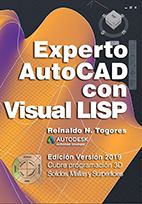 Chicago Tribune Competition, Chicago Tribune Competition,
Adolf Loos (1923). Tomás Maldonado. Tomás Maldonado. Girón Prefab System. Girón Prefab System. The author with The author with
Josefina Rebellón. With Castro at the Camagüey Vocational School (1976). With Castro at the Camagüey Vocational School (1976).
| Reinaldo N. Togores NOTES: - The Cuban National Union of Writers and Artists was created in late 1961.
- Roberto Segre, Arquitectura y Urbanismo de la Revolución Cubana, (La Habana, 1989) p. 32
- Marco Lucio Vitruvio, Los Diez Libros de Arquitectura, (Barcelona, 1955) p. 17
- Bernard Berenson, Aesthetics and History, (New York, 1954) p.254
- Peter Collins, Los Ideales de la Arquitectura Moderna (Barcelona, 1965) p. 132
- Peter Collins, op. cit., p.162
- Quoted in Leonardo Benevolo, Historia de la Arquitectura Moderna (Madrid, 1963) p. 359
- Robert Venturi, Complexity and Contradiction in Architecture (New Cork, 1966) p. 24
- Walter Curt Behrendt, Modern Building (New York, 1937) p. 97
- In this proscriptive nature we find a certain parallel to the repressive ideologies that in terms of politics have characterized our century. It could be argued that the the official Nazi architecture preferred the neoclassical style. But didn't the very same Loos when it came to represent power -in this case that of the press- in the competition for the headquarters of the Chicago Tribune, propose a skyscraper in the form of a gigantic Doric column? Form obviously "follows function".
- Rudolf Arnheim, From Function to Expression, in The Journal of Aesthetics and Art Criticism (vol. XXIII nr. 1, 1964) p. 29
- Alamar: housing development for 130,000 inhabitants built in Eastern Havana from 1971. Cfr. Roberto Segre, op. cit., p. 189.
- Walter Curt Behrendt, op. cit., p.32
- UTOPIE, Des Raisons de l'Architecture, (Paris, 1968) p. 7
- Alongside Roberto Gottardi, founder with Rallo of this discipline, the group had Lucila Fernandez in the areas of Aesthetics, Semantics and Communication, graphic designers Beltran, Niko and Azcuy on Form, and Architects Elmer Lopez and Jesus Sanchez for Module and Symmetry. The subjects of Plane and Spatial Meshes and Color Theory were developed by the author.
- Schnaidt, Maldonado, Bonsiepe and Hesselgren taught courses in Havana during 1972 and 1973.
- Kevin Lynch, La Imagen de la Ciudad, (La Habana, 1970) p. 18
- Architect Heriberto Duverger and Designer Maria Teresa Muniz took part in this workshop.
- Reinaldo Togores, Premisas para un Diseño Industrial Cubano (La Habana, 1971) p. 3 (mimeographed document)
- Reinaldo Togores, op. cit., p. 4
- Designed under the direction of Josefina Rebellón and Anibal Rodriguez-Hoffman. Cfr. Roberto Segre, op. cit., p. 204.
- Georges Charbonnier, Entretiens avec Claude Levi-Strauss (Paris: Julliard, 1961) quoted in Claude Lévi-Strauss, Antropología Estructural, (La Habana, 1970)
- The "General Maximo Gomez" Vocational School was inaugurated in the city of Camagüey on September 1, 1976. In his inaugural speech, President Castro said that: 'by reason of its architecture, at this time it is certainly the best in Cuba' (GRANMA newspaper, september 3, 1976, p. 1). Carlos López Quintanilla collaborated in the project and as consultants, Heriberto Duverger, Alberto Diaz Serpa and Andres Garrudo.
- Design selected in competition by the Advisory Council for the Development of Monumental and Environmental Sculpture (CODEMA), the realization of which was sponsored by the Italo-Latin American Institute in Rome (1988-89).
- José Martí, Antología Mínima, (La Habana, 1972) p. 90
- José Martí, 'Yugo y Estrella' in Obras Completas. (La Habana, 1963-1965) tome 16, p.162.
- This project was awarded in the competition organized by the Cuban Confederation of Workers and CODEMA in 1989.
- Hans Weigert, Estilística, (México, 1962) Tome 2, p. 30
- The park's playground equipment was designed by the sculptor Jorge Romero.
- Paolo Portoghesi, Au delà de l'Architecture Moderne, (París, 1981) p. 115
|



 Chicago Tribune Competition,
Chicago Tribune Competition, Tomás Maldonado.
Tomás Maldonado. Girón Prefab System.
Girón Prefab System. The author with
The author with With Castro at the Camagüey Vocational School (1976).
With Castro at the Camagüey Vocational School (1976).